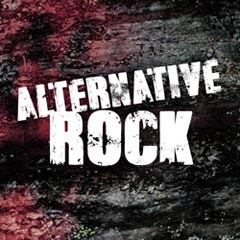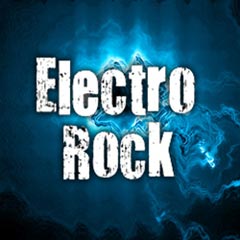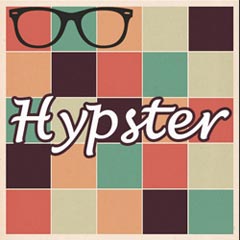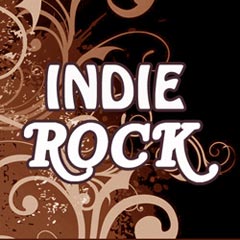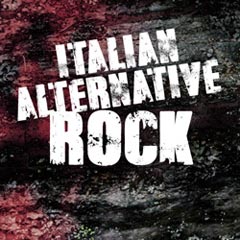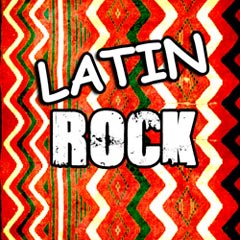Electro rock
ON AIR - PROGRAMMING
The Ultimate Guide to Electro Rock: Blending Electric Guitars and Electronic Sounds
There is something magical about the combination of electric guitars and electronic sounds. When these two seemingly opposing forces merge, they create a unique and personal genre of music that is both energetic and powerful. Electro rock is a subgenre of rock that has been gaining popularity in recent years. With its strong beats, high energy, and exciting sound, it's no wonder that it appeals to music lovers from all over the world. In this ultimate guide, we will dive into the history of electro rock, explore some of its notable artists and albums, and give you a playlist of electro rock tracks that you won't be able to resist.
History of Electro Rock
Like other subgenres of rock, electro rock has its roots in the 1960s and 1970s. The pioneers of this genre were bands like Pink Floyd, Genesis, and The Who. These iconic bands began experimenting with electronic sounds and synthesizers, which were relatively new technologies at the time. The result was a fusion of rock and electronic elements that created a whole new sound. Over the years, electro rock has continued to evolve and grow, with new artists adding their own unique spin to the genre.
Notable Artists and Albums
One of the most notable electro rock albums of all time is Pink Floyd's The Wall. This album was a masterpiece of both rock and electronic music, with its iconic guitar riffs and experimentally synthesized sounds. Other notable electro rock artists and bands include Radiohead, Arcade Fire, Daft Punk, Nine Inch Nails, and Muse, just to name a few. Each of these artists has contributed to the evolution of electro rock and has helped to shape the genre into what it is today.
Playlist of Electro Rock Tracks
If you're looking for some new electro rock tracks to add to your playlist, look no further. Here are some of our favorites:
1. Radiohead - Idioteque
1. Radiohead - Idioteque
2. Muse - Knights of Cydonia
3. Daft Punk - Technologic
4. Arcade Fire - Wake Up
5. Nine Inch Nails - Closer
Electro rock is a genre of music that has something for everyone. From its fusion of electric guitars and electronic sounds to its strong beats and high energy, it's a genre that is sure to keep you on your feet and dancing. Whether you're a fan of the pioneers of this genre like Pink Floyd or a newer artist like Arcade Fire, there's no denying the impact that electro rock has had on the world of music. So, grab your headphones, turn up the volume, and let yourself be swept away by the magic of electro rock.
Electro rock features and brief history
Electronic rock or electrorock is a subgenre of rock that uses synthesizers, MIDI, the computer or any technological innovation to produce music. In the 1920s, the experimentation of the musique concrète and the Theremin paved the way to a new way to create music, manipulating the sound with to the inventions the technology was making available to the artists. The first computer to generate music was a CSIRAC in 1950-51; Joe Meek with the album I Hear a New World in 1959, and The Tornados with the track Telestar in 1962 were the pioneers of the electronic rock, using shynts in their productions. The new instruments the musicians could use were the first guitar stompboxes and the Mellotron, a keyboard instrument forerunner of the modern samplers. The Mellotron was widely employed by artists such as The Moody Blues, the Beatles, King Crimson, Yes and Genesis, in order to add string, brass and woodwind textures to their compositions. The Beach Boys were among the first to use the Tannerin (a keyboard version of the Theremin) in a rock song in their track I Just Wasn’t Made for These Times in 1966, the period when the Moog synth was making its debut on the music scene. The following year The Monkees, one of the first bands to buy a Moog synth, published the album Pisces, Aquarius, Capricorn & Jones Ltd., rapidly reaching number 1 on the US charts; after a couple of months, the Doors made their Moog debut with the album Strange Days. The decade ended with the neat supremacy of the new instrument in the mainstream commercial scene, boosted by its endorsement by the Beatles and Simon and Garfunkel. Then, at the beginning of the 1970s, the list of great musicians that started using the synth was quite long: Pink Floyd, Emerson, Lake & Palmer, The Who, Electric Light Orchestra, Genesis, Return Forever, Weather Report, but also Kraftwerk, Tangerine Dream, Can and Faust. The “Kraut Rock” of the latter, together with Brian Eno’s contribution, gave the final boost to the development of electronic rock. In Japan too, Isao Tomita with Electric Samurai: Switched on Rock, and Osamu Kitajima's with the album Benzaiten included synth sounds in their new electronic rock music productions. Despite the initial enthusiasm for the new instruments, in the 1970s many bands avoided using the synths, whose sound they considered a counterfeiting of traditional instruments. The first punk bands were among those, but from the second half of the decade post-punk and new wave bands were already employing drum machines, synths and samplers to reproduce industrial setting sounds, thus paving the way to industrial music. Pop and rock music followed the trend: many artists like Cat Stevens, Ultravox and the Japanese Yellow Magic Orchestra started to take advantage of the potentiality of the new instruments. MIDI and digital audio were the detonators of electronic music in the 1980s. The synth was dominating both the pop and the rock scene, with Depeche Mode and Duran Duran leading the trend, but also the New Romantics like Spandau Ballet, A Flock of Seagulls, Culture Club ABC, Soft Cell, Talk Talk, B- Movie and Eurythmics that fused glam and electronic elements. The first platinum discs of industrial rock came in the 1990s with Ministry and Nine Inch Nails, but also the indietronic of Stereolab and Disco Inferno was popular in the last decade of the millennium. The artists of this new phase were mixing indie sounds and electronic music, flanked in the experimentation by the pioneers of electroclash, like I-F, and of the new rave/synth rock of Klaxons. In the last years, metalcore and post-punk bands have been using electronic music devices to generate drums and vocals, creating subgenres or styles like electronicore, synthcore, trancecore and many others.
A dive into Italian electro rock with oZZo
What does Milan’s province represent for you?
Hi guys! I’m not a “ghetto boy wannabe” saying suburbs is my life. Since I was young, I have tried as much as I could to spend all my free time in Milan (the biggest city closer to my town). I used to spend my time there looking for vinyl records, CDs and t-shirts in three of the greatest places I’ve ever been: the “Fiera di Senigallia” close to the Navigli, Zabrienskie Point (vinyl and CD store specialized in Punk) and Transex (CD and vinyl record store specialized in metal).
Your music interestingly mixes different styles and genres. Can you explain us, which are your music roots?
You are right; the oZZo project mixes up all my music influences; from dubstep to dance, from rock to pop and Trap (yes I’ve said trap ;) looking for new sound experiences, and of course, right from my background Bring Me the Horizon and 30 Seconds to Mars.If I look back in my life this is not so strange because when I was young I used to listen and play metal music like Metallica, Iron maiden, Slayer; then I found out Bad Religion and Pennywise with the great 90’s melodic hardcore, and few years later Beastie Boys and Cypress Hill.I was constantly looking for inspiration from other genres. “Contamination” is my music style.My last project “Audrey” has the seeds of this kind of music style inside, especially in the last album “Lost in Promises” you can see the roots of the new Ivano oZZo Tomba.
Pastislost is your last project, your debut EP. Which are the main themes you wanted to develop in this record?
Let’s start from the beginning: the title. It’s #pastislost, with the hashtag and not Past is lost or Pastislost.It’s a sort of statement; you are what you are only if you have a virtual life on social networks or if you have been shared a thousand times. This is my introduction to my audience but behind the title, there’s a bigger and deeper concept. The time passing by and the missing of the person after the breakup (friendship, love, death, never mind)The video clip of As Fast As You Can is an example; you can watch it as a teenage love story (like Beverly Hills 90210) or if you are smart, you can find out many secret messages inside.
How has the collaboration with Alessio Corrado started?
I have known Alessio for 20 years or even more; in our first event as oZZo he reminded me we had played 23 years before that gig. A couple of years ago I finished writing my first single Nothing But You (pastislost); I thought it was just a game, a sort of birthday present for myself. I met Alessio as always in Rho’s Rock’n’Roll club and drinking a Montenegro while I was complaining to him about the needs of a singer he told me he could sing my stuff. I’m honest saying I was really, really puzzled by Alessio being the singer of the project. I wasn’t scared of Alessio singing the vocals, but I was afraid I could be seduced and abandoned eheheThe name of the project (that’s my nickname too) is Alessio fault! He told me the same night: you have a logo (oZZo) as designer, photographer and fashion victim; you already have merchandise with oZZo’s logo, so that’s it. We have the name.I needed a break with the past even with the band name; I was still focused on my last band target, so the name could be something like “Seduced by a Kiss” or “Lost in Promises”- (quoting Audrey). Alessio helped me forget my last delusions and begin a new chapter.
The interview continues in the artist’s page
What are you thinking about?

